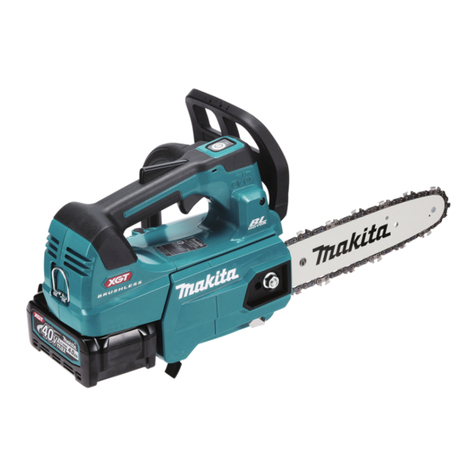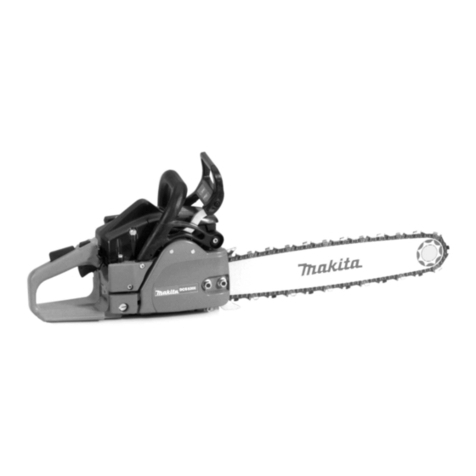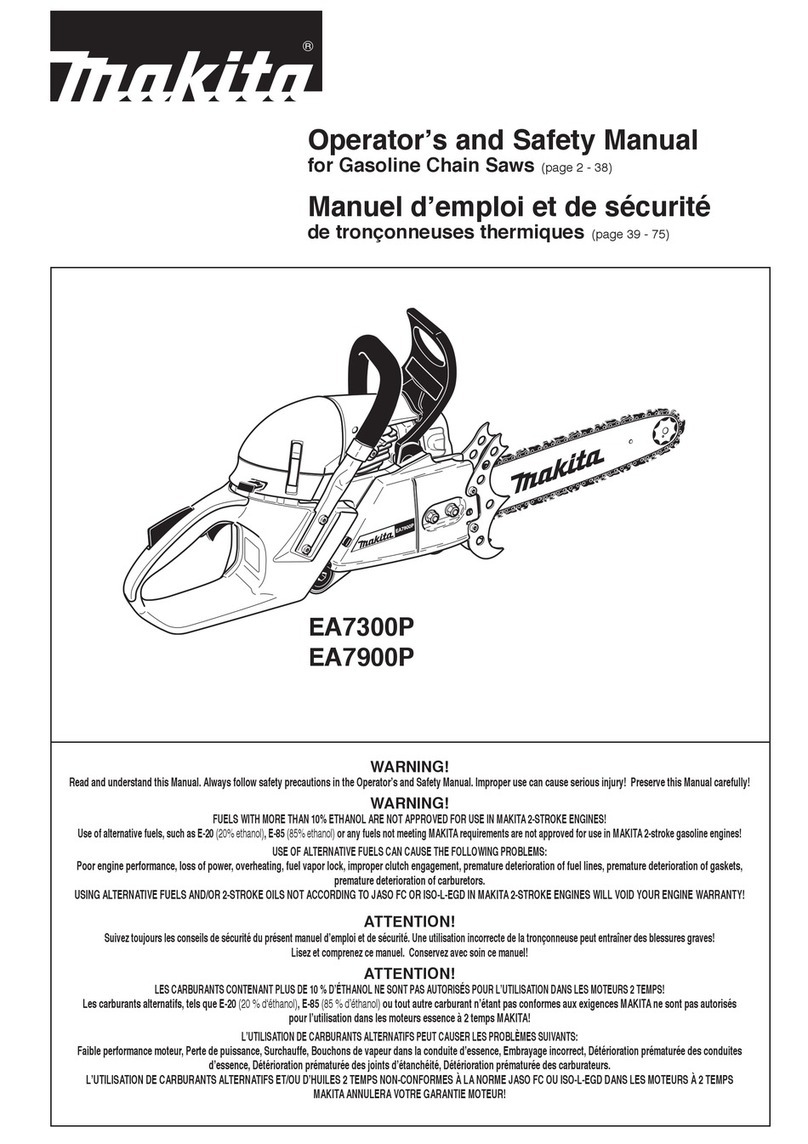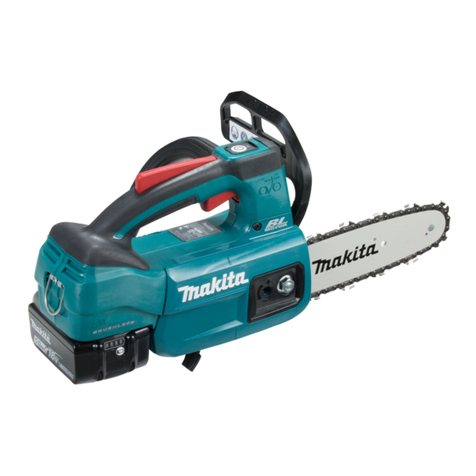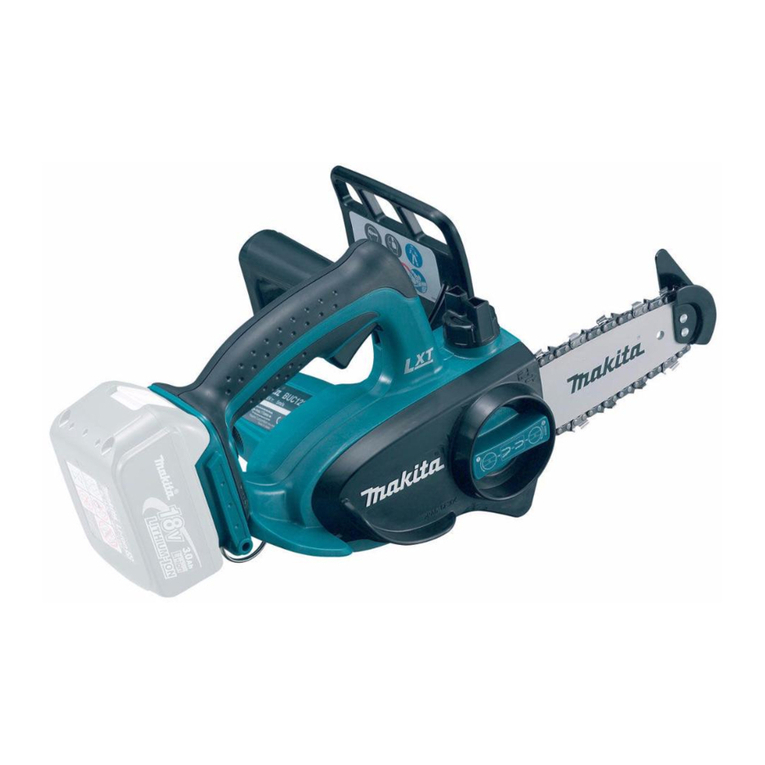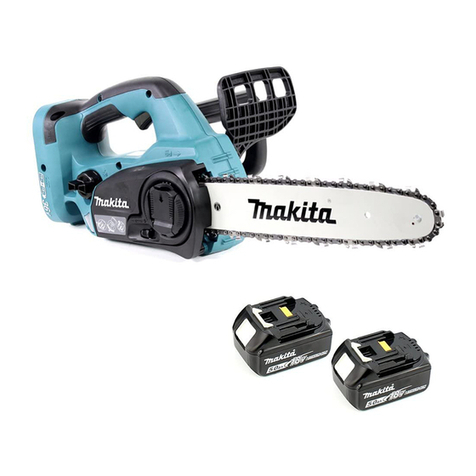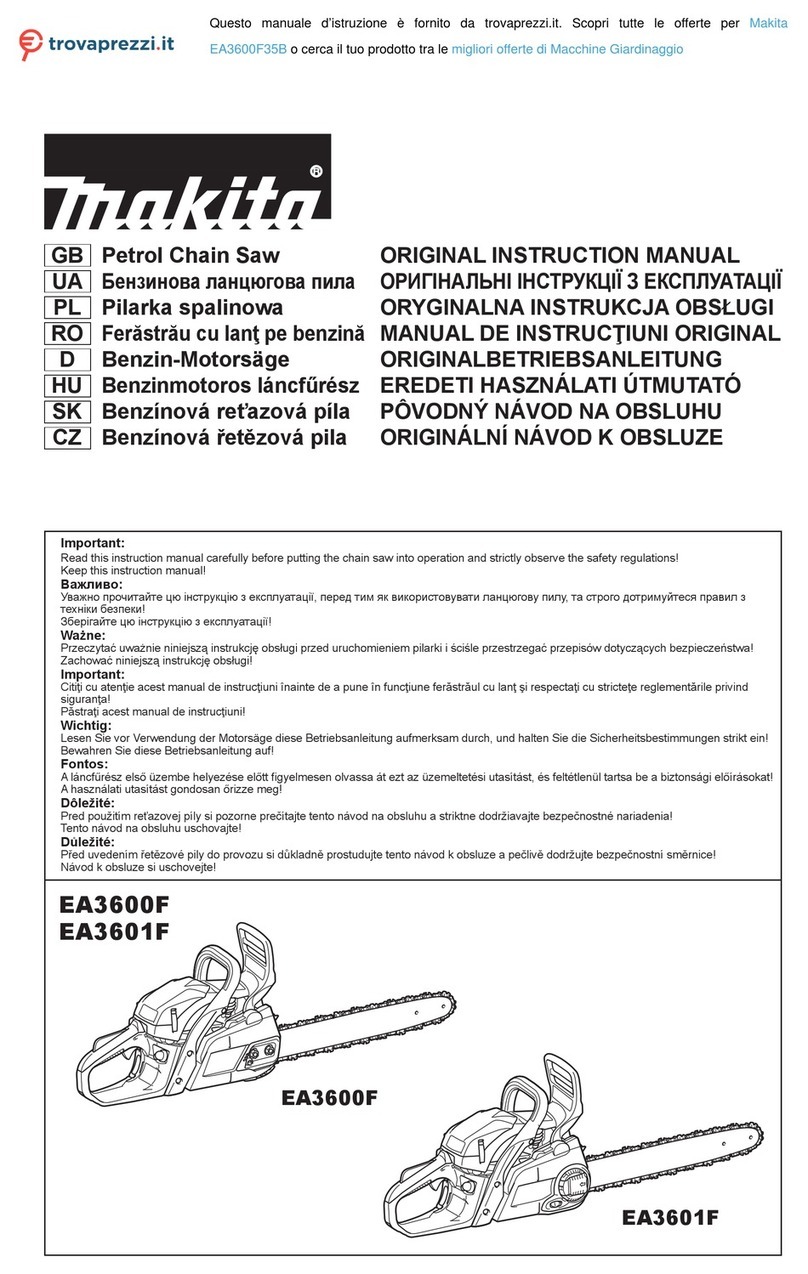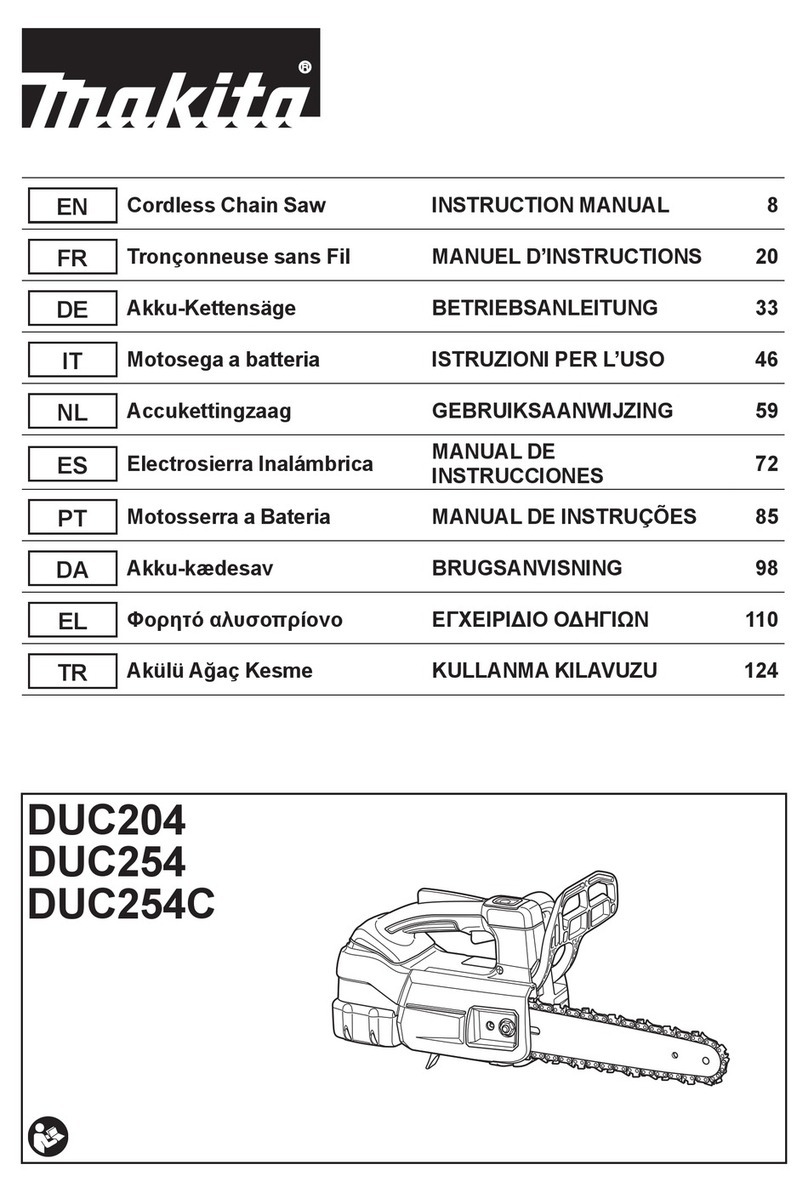
Thank you for purchasing a MAKITA product!
Congratulations on choosing a MAKITA chain saw! We are con‑
dent that you will be satised with this modern piece of equipment.
The EA3200S, EA3201S, EA3202S, EA3203S are very handy
and robust chain saws with a new Design.
The automatic chain lubrication with variable‑ow oil pump
and maintenance‑free electronic ignition ensure trouble‑free
operation, while the hand‑saving anti‑vibration system and
ergonomic grips and controls make work easier, safer, and less
tiring for the user. The Featherlight‑Start system lets you start the
saw eortlessly with a spring‑loaded starting assist. For some
countries the saw is also equipped with a catalytic converter.
This reduces the amount of pollutants in the exhaust, and meets
European Guideline 2002/88/EC.
MAKITA chain saws EA3200S, EA3201S, EA3202S, EA3203S
are equipped with the latest safety features and meet all national
and international standards. These features include: hand guards
on both handles, grip throttle lever lock, chain catch, safety saw
chain, and chain brake. The chain brake can be actuated manually,
and is also inertia‑actuated automatically in case of kickback.
The following industrial property rights apply:
DE 101 32 973, DE 20 2008 006 013, DE 20 2009 013 953, DE
203 19 902, DE 203 01 182, DE 197 22 629, DE 10 2007 039
028, DE 10 2007 038 199.
In order to ensure the proper functioning and performance
of your new chain saw, and to safeguard your own per-
sonal safety, it is imperative that you read this instruction
manual thoroughly before operation. Be especially careful
to observe all safety precautions! Failure to observe these
precautions can lead to severe injury or death!
Table of contents Page
Delivery inventory ..............................................................3
Symbols ............................................................................... 3
SAFETY PRECAUTIONS
Intended use .................................................................... 4
General precautions ........................................................4
Protective equipment ....................................................... 4
Fuels / Refuelling ............................................................. 5
Putting into operation ...................................................... 5
Kickback ......................................................................... 6
Working behavior/Method of working ...........................6‑7
Transport and storage ..................................................... 8
Maintenance ................................................................... 8
First aid ...........................................................................8
Vibration .......................................................................... 8
Technical data .....................................................................9
Packing ................................................................................ 9
Denomination of components ......................................... 10
PUTTING INTO OPERATION
Only for models with fastening nuts on the sprocket
guard
Mounting the guide bar and saw chain .....................11‑12
Tightening the saw chain ............................................... 12
Checking the chain tension ............................................ 13
Retightening the saw chain ........................................... 13
Only for the QuickSet guide bar
Mounting the guide bar and saw chain .....................14‑15
Tensioning the saw chain .............................................. 15
Checking the chain tension ........................................... 15
Retensioning the saw chain ........................................... 15
Only for models with quick tensioner on sprocket guard
(TLC)
Mounting the guide bar and saw chain .....................16‑17
Tightening the saw chain ............................................... 17
Checking the chain tension ........................................... 18
Retensioning the saw chain ........................................... 18
For all models
Chain brake ................................................................... 18
Fuel ............................................................................... 19
Chain oil ....................................................................19‑20
Filling fuel and chain oil ................................................. 20
Checking the chain lubrication ...................................... 21
Adjusting the chain lubrication ....................................... 21
Starting the engine ........................................................ 22
Cold starting .................................................................. 22
Warm starting ................................................................ 22
Stopping the engine ...................................................... 22
Checking the chain brake .............................................. 23
Adjusting the carburetor ................................................24
MAINTENANCE
Sharpening the saw chain ........................................25‑26
Cleaning the inside of the sprocket guard ...................... 27
Cleaning the guide bar .................................................. 27
Replacing the saw chain ................................................28
Cleaning the air lter ...................................................... 29
Replacing the spark plug ............................................... 30
Checking the ignition spark ........................................... 30
Checking the muer screws ......................................... 30
Replacing the starter cable/Replacing the return spring
pack/Replacing the starter spring ..................................31
Mounting the fan housing .............................................. 31
Cleaning the air lter compartment/fan compartment .... 32
Cleaning the cylinder ns .............................................. 32
Replacing the suction head ........................................... 32
Instructions for periodic maintenance ............................ 33
Service, spare parts and guarantee ............................... 34
Trouble shooting ...............................................................35
Extract from spare parts list .......................................36‑37
EC Declaration of Conformity .......................................... 38
